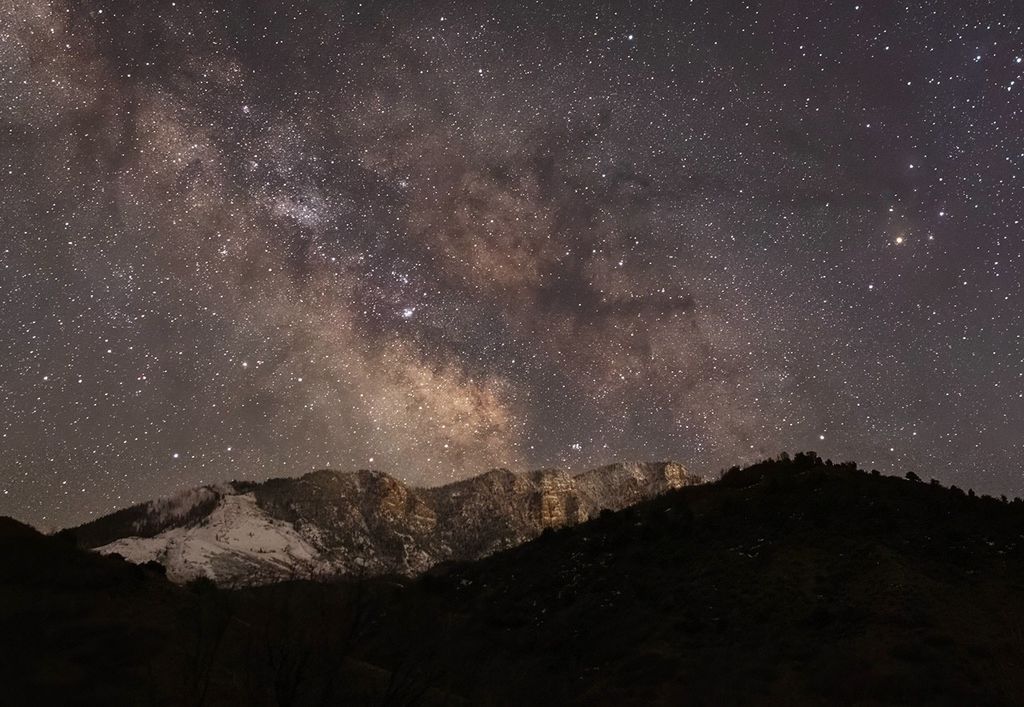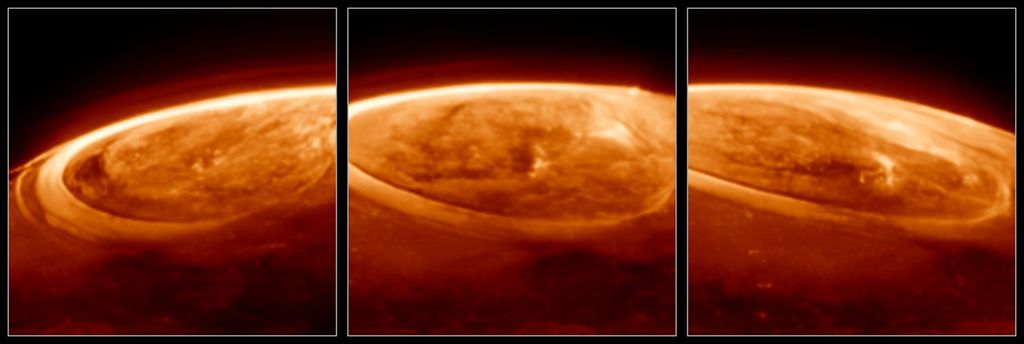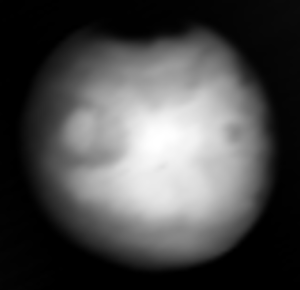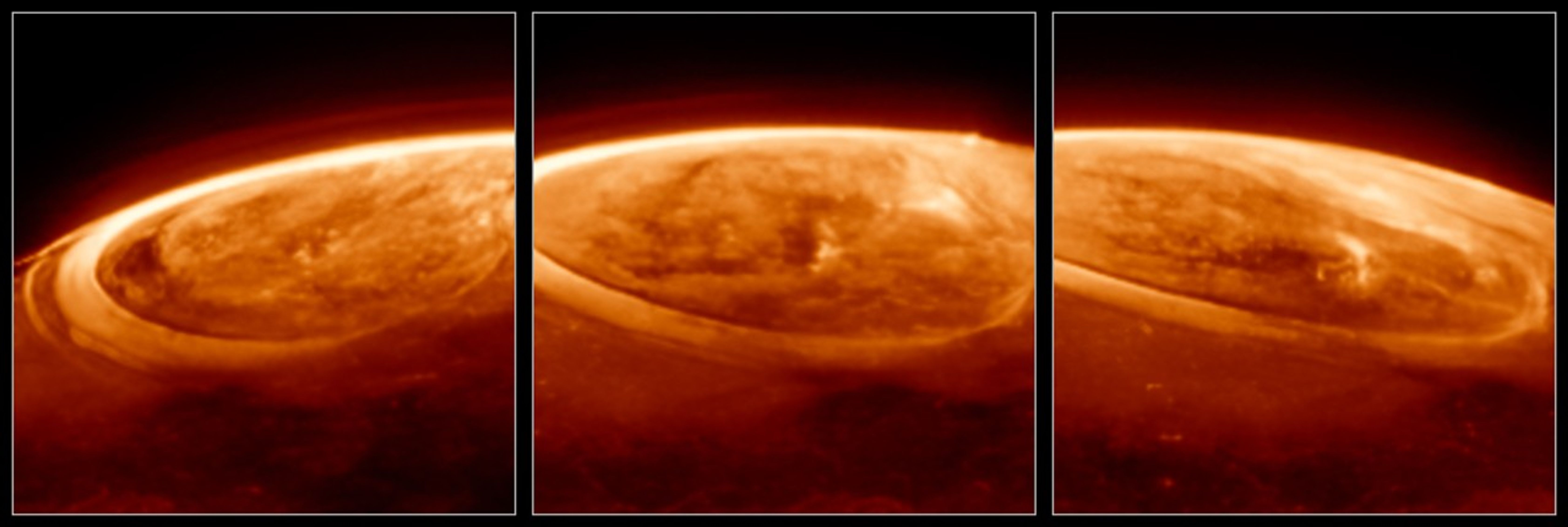21 min read
October 2021: The Next Full Moon is the Hunter’s Moon; the Travel, Dying Grass, Sanguine, or Blood Moon
The next full Moon is the Hunter's Moon, the Travel Moon, and the Lucy Moon.
The Next Full Moon is the Hunter's Moon; the Travel, Dying Grass, Sanguine, or Blood Moon; Shared Purnima; Pavarana; the full Moon of the Thadingyut Festival of Lights, the Phaung Daw Oo Pagoda Festival, and the Boun Suang Huea or the Boat Racing Festival; and the Lucy Moon.
The next full Moon will be on Wednesday morning, Oct. 20, 2021, appearing opposite the Sun (in Earth-based longitude) at 10:57 a.m. EDT. This will be on Wednesday for much of the world but will be on Thursday from Australian Central Standard time eastward to the International Date Line. The Moon will appear full for about three days around this time, from Monday night into Thursday night.
As the full Moon after the Harvest Moon, this will be the Hunter's Moon. The earliest use of the term "Hunter's Moon" cited in the Oxford English Dictionary is from 1710. According to the Farmer's Almanac, with the leaves falling and the deer fattened, it is time to hunt. Since the harvesters have reaped the fields, hunters can easily see the animals that have come out to glean (and the foxes that have come out to prey on them).
The Maine Farmer's Almanac first published Native American names for the full Moons in the 1930s. Over time, these names have become widely known and used. According to this almanac, as the full Moon in October the Algonquin tribes in what is now the northeastern U.S. called this the Travel Moon, the Dying Grass Moon, or the Sanguine or Blood Moon. Some sources indicate that the Dying Grass, Sanguine, and Blood Moon names are related to the turning of the leaves and dying back of plants with the start of fall. Others indicate that the names Sanguine or Blood Moon are associated with hunting to prepare for winter.
I have read that the name Travel Moon comes from observing the migration of birds and other animals preparing for the winter. I don't know, but this name may also refer to the season when the more northern tribes would move down from the mountains for the winter. For example, both the Iroquois and Algonquin would hunt in the Adirondacks in the summertime but would leave to avoid the harsh mountain winter.
This full Moon occurs around the end of the seasonal monsoon rains in the Indian subcontinent. It marks the end of the month of Ashvin in the traditional Hindu calendar and Thadingyut in the traditional Burmese calendar.
For Hindus, this is Sharad Purnima, a harvest festival celebrated in a variety of ways throughout India.
For Buddhists, this Moon marks the end of Vassa, the three-month period of fasting for Buddhist monks tied to the monsoons (Vassa is sometimes given the English names Rains Retreat or Buddhist Lent). There are numerous festivals and holy days associated with this Moon at the end of Vassa. Many Buddhists observe the holy day Pavarana on this day. In Myanmar, this full Moon corresponds with the three-day Thadingyut Festival of Lights, also known as the Lighting Festival of Myanmar. Also in Myanmar, this full Moon is near the end of the Phaung Daw Oo Pagoda Festival. This festival began on the first Waxing Moon day of the month of Thadingyut (Oct. 6, 2021) and will end a few days past the full Moon (Oct. 23). In Laos, this full Moon corresponds with Boun Suang Huea or the Boat Racing Festival.
Another name for this full Moon is the Lucy Moon, for the NASA mission named Lucy that launched on Saturday, Oct. 16, 2021, at 5:34 a.m. EDT on a journey to the Trojan asteroids.
Jupiter is the largest planet in our solar system with 2.5 times the mass of all the other planets combined. As our solar system formed over four billion years ago, Jupiter's gravity created two stable locations ahead of and behind Jupiter in its orbit. The asteroids in these locations appear to have been there since the birth of our solar system and are expected to yield vital clues to deciphering its history. They may even tell us about the kinds of organic materials that may have been supplied to the early Earth. Lucy will spend 12 years exploring seven of these asteroids, plus one main belt asteroid that Lucy will encounter on its way.
In most lunisolar calendars the months change with the new Moon and full Moons fall near the middle of the lunar months. This full Moon is near the middle of the ninth month of the Chinese calendar, Marcheshvan (often shortened to Cheshvan or Heshvan) in the Hebrew calendar, and Rabiʽ al-Awwal in the Islamic calendar.
As usual, the wearing of suitably celebratory celestial attire is encouraged in honor of the full Moon.
As autumn continues the daily periods of sunlight continue to shorten. On Wednesday, Oct. 20, (the day of the full Moon), morning twilight will begin at 6:25 a.m. EDT, sunrise will be at 7:23 a.m., solar noon will be at 12:52:45 p.m. when the Sun will reach its maximum altitude of 40.55 degrees, sunset will be at 6:22 p.m., and evening twilight will end at 7:20 p.m.
Ever since 2007 when Congress moved the start of Daylight Saving Time from the end of October to the beginning of November, the latest sunrises of the year have been in late October and early November. In 2021 (for the Washington, D.C. area) the sunrises from October 24 to November 6 (in EDT) will be later than were the latest sunrises of winter on January 4 and 5, 2021 (which were at 7:27 a.m. EST). If you find you are having trouble waking up in late October and early November, these dark mornings may be the reason (or at least a reasonable excuse).
The latest sunrise of the year will be on Saturday, November 6, the last day of Daylight Saving Time. Morning twilight will begin at 6:41 a.m. EDT, sunrise will be at 7:41 a.m., solar noon will be at 12:51:40 p.m. when the Sun will reach its maximum altitude of 34.95 degrees, sunset will be at 6:02 p.m., and evening twilight will end at 7:02 p.m.
On Sunday, Nov. 7, 2021, we "fall back" from 2 a.m. EDT to 1 a.m. EST, gaining an hour of sleep. Morning twilight on Nov. 7 will begin at 5:42 a.m. EST, sunrise will be at 6:42 a.m., solar noon will be at 11:51:43 a.m. when the Sun will reach its maximum altitude of 34.66 degrees, sunset will be at 5:01 p.m., and evening twilight will end at 6:01 p.m.
By Friday, Nov. 19 (the day of the full Moon after next), morning twilight will begin at 5:54 a.m. EST, sunrise will be at 6:55 a.m., solar noon will be at 11:53:32 p.m. when the Sun will reach its maximum altitude of 31.52 degrees, sunset will be at 4:51 p.m., and evening twilight will end at 5:53 p.m.
These should still be good evenings for Jupiter and Saturn watching, especially with a backyard telescope. Both Saturn and Jupiter were at their closest and brightest for the year in August. While dimming as they shift farther from Earth, they are still relatively bright. Both have been shifting west, making them easier to view in the evenings (and friendlier for backyard stargazing, especially if you have young ones with earlier bedtimes). With clear skies and a telescope, you should be able to see Jupiter's four bright moons, Ganymede, Callisto, Europa, and Io, noticeably shifting positions in the course of an evening. For Saturn, you should be able to see Saturn's rings as well as Saturn's largest moon, Titan.
2021 will not be a good year for seeing the Orionid Meteor Shower due to interference from the full Moon. This shower is expected to be active from Oct. 2 to Nov. 7, 2021, with a peak on the morning of Oct. 21, the day after the full Moon.
Evening Sky Summary
On the evening of Wednesday, Oct. 20, 2021, (the day of the full Moon), as evening twilight ends (at 7:20 p.m. EDT), the brightest planet visible will be Venus, appearing 10 degrees above the southwestern horizon. The next brightest planet will be Jupiter, appearing 32 degrees above the south-southeastern horizon. The faintest of the visible planets in the sky will be Saturn, appearing 31 degrees above the southern horizon. The bright star closest to overhead will be Deneb, appearing 81 degrees above the northeastern horizon. Deneb is about 2,600 light-years from Earth and is the 19th brightest star in our night sky.
As the lunar cycle progresses, Jupiter, Saturn, and the background of stars will appear to shift toward the west each evening (although it is actually the Earth that is moving around the Sun toward the east). The bright planet Venus will appear to shift left along the southwestern horizon each evening, appearing brighter and higher above the horizon as it shifts closer to the Earth. The waxing Moon will appear to pass near Venus on November 7, Saturn on November 10, and Jupiter on Nov. 11, 2021.
By the evening of Friday, Nov. 19, 2021, (the day of the full Moon after next), as evening twilight ends (at 5:53 p.m. EST), the brightest planet visible will be Venus, appearing 14 degrees above the southwestern horizon. The next brightest planet will be Jupiter, appearing 37 degrees above the southern horizon. The faintest of the visible planets in the sky will be Saturn, appearing to the right of Jupiter at 31 degrees above the south-southwestern horizon. The bright star closest to overhead still will be Deneb, appearing 77 degrees above the northwestern horizon. The bright star Aldebaran will just be rising, appearing about 8 degrees below the full Moon on the east-northeastern horizon.
Morning Sky Summary
On the morning of Oct. 20, 2021 (the day of the full Moon), as morning twilight begins (at 6:25 a.m. EDT), the only visible planet in the sky will be Mercury, appearing about 5 degrees above the eastern horizon. The bright stars of the local arm of our home galaxy, including the constellation Orion, will appear spread across the sky from the south-southeast toward the west-northwest. The bright star appearing closest to directly overhead will be Pollux at 77 degrees above the southeastern horizon. Pollux is the brighter of the twins in the constellation Gemini and is about 34 light-years from us.
As the lunar cycle progresses the background of stars will appear to shift toward the west. The planet Mercury will appear at its highest above the horizon for this appearance on Oct. 25, 2021, after which it will begin shifting back toward the horizon.
The waning Moon will pass near the bright star Aldebaran on Oct. 24, Pollux on Oct. 27 and 28, and Regulus on Oct. 30, 2021. On the morning of Oct. 30, the bright star Spica will begin appearing above the horizon at the time morning twilight begins, appearing to the lower right of Mercury. Mercury and Spica will appear at their closest on the morning of Nov. 2, with Spica appearing 3 degrees to the right of Mercury. The next morning, Nov. 3, the waning crescent Moon will join Mercury and Spica to form a triangle on the east-southeastern horizon. Nov. 10 will be the first morning that Mercury will no longer be above the horizon as morning twilight begins, but if you have a clear view of the east-southeastern horizon, you should be able to see the fainter planet Mars appearing just a degree to the right of Mercury after morning twilight begins but before the sky becomes too bright to see Mars.
Beginning Nov. 13, the planet Mars will begin appearing above the east-southeastern horizon as morning twilight begins. Mercury should be bright enough that you may still be able to see it in the glow of dawn after it rises until around Nov. 18.
By the morning of Nov. 19, 2021 (the day of the full Moon after next), as morning twilight begins (at 6:25 a.m. EST), the only visible planet in the sky will be Mars, appearing just a degree above the east-southeastern horizon. The bright stars of the local arm of our home galaxy will appear spread across the southwestern horizon. The bright star appearing closest to directly overhead still will be Pollux at 64 degrees above the west-southwestern horizon, with Regulus a close second at 62 degrees above the south-southeastern horizon. Regulus appears to us as one star (the 21st brightest star in our sky), but it is actually two pairs of stars orbiting each other for a total of four stars. Regulus is 79 light-years from us.
Daily Guide
OCTOBER
October 14-15
Thursday evening into early Friday morning, Oct. 14 to 15, 2021, the bright planet Jupiter will appear above the waxing gibbous Moon. Jupiter will appear about 9 degrees to the upper left of the Moon as evening twilight ends at 7:28 p.m. EDT. Jupiter will shift clockwise around the Moon as the night progresses, appearing about 7 degrees to the upper right of the Moon as the Moon sets in the west-southwest about 2 hours after midnight (Friday morning at 1:54 a.m.).
By Friday evening, Oct. 15, 2021, the waxing gibbous Moon will have shifted such that Jupiter will appear about 9 degrees to the upper right of the Moon as evening twilight ends (at 7:27 p.m. EDT). The pair will appear to separate as the night progresses.
October 16
Saturday morning, Oct. 16, 2021, at 5:34 a.m. EDT, is the scheduled launch of NASA’s Lucy mission.
It will be the first morning that the planet Mercury will appear above the eastern horizon at the time morning twilight begins at 6:46 a.m. EDT.
Saturday evening, the bright star Antares will appear below the even brighter planet, Venus. As evening twilight ends at 7:26 p.m. EDT Venus will appear 10 degrees above the southwestern horizon with Antares 1.4 degrees below Venus. Antares will set about an hour later at 8:25 p.m.
Oct. 16, 2021, also is International Observe the Moon Night.
October 20
As mentioned above, the full Moon will be Wednesday morning, Oct. 20, 2021, at 10:57 a.m. EDT. The Moon will appear full for about three days around this time, from Monday night through Thursday morning (and possibly the earlier part of Thursday evening).
October 21
The Orionid Meteor Shower is predicted to peak the morning of Thursday, Oct. 21, 2021, but the light of the full Moon will interfere with our ability to see these meteors this year.
October 23-23
Saturday night into Sunday morning, Oct. 23 to 24, 2021, the bright star Aldebaran will appear below the waning gibbous Moon. Aldebaran will rise above the east-northeastern horizon Saturday night at 8:36 p.m. EDT appearing about 6 degrees to the lower right of the Moon. The Moon will reach its highest in the sky for the night on Sunday morning at 3:36 a.m. with Aldebaran about 7 degrees below the Moon, and the pair will appear high in the west as morning twilight begins at 6:29 a.m.
October 24
Sunday, Oct. 24, 2021, at 11:29 a.m. EDT, the Moon will be at apogee, its farthest from the Earth for this orbit.
October 25
On Monday morning, Oct. 25, 2021, as morning twilight begins at 6:30 a.m. EDT, the planet Mercury will appear at its highest above the horizon for this apparition. Mercury reached its greatest angular separation from the Sun earlier in the morning at 12:59 a.m., appearing half-full when viewed through a large enough telescope.
October 26-28
Tuesday morning, Oct. 26, 2021, will be the first morning that the planet Mars will appear above the horizon about 30 minutes before sunrise around 6:59 a.m. EDT, a rough approximation of when it will begin becoming visible in the glow of dawn.
Tuesday night into Wednesday morning, Oct. 26 to 27, and again on Wednesday night into Thursday morning, Oct. 27 to 28, 2021, the bright star Pollux will appear near the waning gibbous Moon. As Pollux rises late Tuesday night at 10:47 p.m. EDT, it will appear more than 8 degrees to the lower left of the Moon. By the time the Moon reaches its highest in the sky for the night on Wednesday morning at 6:06 a.m., Pollux will appear about 6 degrees to the upper left of the Moon. Morning twilight will begin less than a half-hour after this at 6:31 a.m. Pollux and the Moon will appear at their closest on Wednesday afternoon when we cannot see them from the Americas. By moonrise on Thursday night (at 11:13 p.m.), Pollux will appear about 5 degrees above the Moon, and the pair will appear to separate as Wednesday night proceeds into Thursday morning.
Thursday afternoon, Oct. 28, 2021, the waning Moon will appear half-full as it reaches its last quarter at 4:05 p.m. EDT (when we cannot see it).
October 29
Friday afternoon, Oct. 29, 2021, will be when the planet Venus reaches its greatest angular separation from the Sun as seen from the Earth for this apparition (called greatest elongation), appearing half-lit through a telescope. Because the angle of the line between the Sun and Venus and the line of the horizon changes with the seasons, the date when Venus and the Sun appear farthest apart as seen from the Earth is not the same as when Venus appears highest above the horizon as evening twilight ends, which will occur on Nov. 28. Venus will continue brightening until December 2021 as it moves closer to the Earth.
October 30
On Saturday morning, Oct. 30, 2021, the bright star Regulus will appear below the waning crescent Moon. The Moon will be about 8 degrees above the east-northeastern horizon as Regulus rises at 2 a.m. EDT. The Moon will have shifted to about 6 degrees from Regulus by the time morning twilight begins at 6:34 a.m.
October 31: Halloween
Sunday evening, Oct. 31, 2021, is Halloween. We currently divide the year into four seasons based upon the solstices and equinoxes, with winter beginning on the winter solstice in December. This approximates winter as the quarter of the year with the coldest temperatures. Much of pre-Christian northern Europe celebrated "cross-quarter days" halfway between the solstices and equinoxes, and divided the seasons on these days. Using this definition, winter was the quarter of the year with the shortest daily periods of daylight, with autumn ending and winter beginning with Samhain, traditionally celebrated on Oct. 31st or Nov. 1st (the middle of our fall). Many of our Halloween traditions are thought to tie back to these earlier celebrations of the end of autumn and the start of winter.
NOVEMBER
November 2
Shortly before dawn on Tuesday morning, Nov. 2, 2021, if you have a clear view of the east-southeastern horizon, you may be able to see the bright star Spica appearing about 3 degrees to the lower right of the bright planet Mercury. Spica will rise about 15 minutes before morning twilight begins but will become difficult to see as the sky brightens after morning twilight begins at 6:37 a.m. EDT. The waning crescent Moon will appear about 17 degrees above Spica.
November 3
The next morning, Wednesday, Nov. 3, 2021, the waning crescent Moon will join Mercury and Spica to a triangle on the east-southeastern horizon. Mercury will be the last to rise about 18 minutes before morning twilight begins at 6:20 a.m. EDT, with the Moon about 4 degrees above Mercury and Spica about 4.5 degrees to the right. Spica will likely be the first to be lost from sight after morning twilight begins at 6:38 a.m., but the Moon and Mercury may remain visible for as much as another 20 or 30 minutes.
November 4-5
Thursday afternoon, Nov. 4, 2021, at 5:15 p.m. EDT, will be the new Moon, when the Moon passes between the Earth and the Sun and will not be visible from the Earth. Some consider this is a supermoon. The term "supermoon" was coined by the astrologer Richard Nolle in 1979 for either a full or new Moon near when the Moon is near its closest to the Earth. Full supermoons get more attention because we can see and appreciate their greater brightness and angular size.
This new Moon is considered the darkest night of the Hindu lunisolar year. The five-day Hindu festival of lights, Diwali or Dipavali, is celebrated around the night of this new Moon, from Nov. 2 to 6, 2021.
The day of – or the day after – the New Moon marks the start of the new month for most lunisolar calendars. Sundown on Thursday, Nov. 4, 2021, marks the start of Kislev in the Hebrew calendar. Hanukkah will begin toward the end of Kislev. The tenth month of the Chinese calendar starts on Friday, Nov. 5, 2021 (at midnight in China's time zone, which is 12 hours ahead of EDT). In the Islamic calendar, the months traditionally start with the first sighting of the waxing crescent Moon. Many Muslim communities now follow the Umm al-Qura Calendar of Saudi Arabia, which uses astronomical calculations to start months in a more predictable way. Using this calendar, sundown on Friday evening, Nov. 5, 2021, will probably mark the beginning of Rabiʽ al-Thani, also known as Rabiʽ al-Akhir.
On Thursday, Nov. 4, 2021, the planet Uranus will be at its closest and brightest, called "opposition" because it will be opposite the Earth from the Sun, effectively a "full" Uranus. Although Uranus is not considered a visible planet, at opposition it is bright enough to be visible for someone with excellent eyesight under very dark skies and ideal conditions. If you know where to look, it should be visible with binoculars or a backyard telescope.
Friday, Nov. 5, 2021, at 6:18 p.m. EDT, the Moon will be at perigee, its closest to the Earth for this orbit.
November 6
On Saturday evening, Nov. 6, 2021, if you have a very clear view of the southwestern horizon, you might be able to see the bright star Antares about 4 degrees below the thin, waxing crescent Moon. You will need to look during the short period between when the sky becomes dark enough to see Antares (after about 6:32 p.m. EDT) and when Antares sets (at 7:02 p.m.).
November 7: ‘Fall Back’ to Standard Time
On Sunday morning, Nov. 7, at 2 a.m. EDT, we "fall back" to 1 a.m. EST. If you have something you want to do for 2 hours, but you're only supposed to do it for one hour, consider doing it from 1 a.m. EDT to 2 a.m. EST on Sunday morning...
On Sunday evening, the bright planet Venus will appear about 5 degrees to the upper left of the thin, waxing crescent Moon. As evening twilight ends at 6:01 p.m. EST the Moon will appear about 11 degrees above the southwestern horizon. The Moon will set first at 7:23 p.m.
November 10
Wednesday morning, Nov. 10, 2021, will be the first morning that the planet Mercury will no longer be above the horizon as morning twilight begins. It will also be the morning when bright Mercury will appear nearest to the fainter planet Mars. If you have a clear view of the east-southeastern horizon, you may be able to see the fainter planet Mars appearing just a degree to the right of Mercury after Mars rises at 5:51 a.m. EST but before the sky becomes too bright to see Mars.
Wednesday evening, the planet Saturn will appear about 6 degrees to the upper right of the waxing half-Moon with the brighter planet Jupiter appearing farther to the upper left. The Moon will appear about 28 degrees above the southern horizon as evening twilight ends at 5:58 p.m. EST, and Saturn will set first on the west-southwestern horizon at 10:26 p.m.
November 11
On Thursday morning, Nov. 11, 2021, the Moon will appear half-full as it reaches its first quarter at 7:46 a.m. EST.
On Thursday evening, the bright planet Jupiter will appear about 5 degrees to the upper right of the waxing half-Moon, with the planet Saturn appearing farther to the right. The Moon will appear about 31 degrees above the southern horizon as evening twilight ends at 5:58 p.m. EST, Saturn will set first on the west-southwestern horizon at 10:22 p.m., and Jupiter will set next at 11:40 p.m.
November 13
Beginning Saturday morning, Nov. 13, 2021, the planet Mars will begin appearing above the east-southeastern horizon as morning twilight begins.
November 18
Thursday morning, Nov. 18, 2021, will be the last morning that Mercury will be above the horizon 30 minutes before sunrise, and it’s approximately when Mercury will stop being visible in the glow of dawn for this apparition.
November 19
The full Moon after next will be Friday morning, Nov. 19, 2021, at 3:58 a.m. EST. The Moon will be close enough to opposite the Sun that it will pass through the shadow of the Earth, causing a lunar eclipse. The Moon will appear full for three days around this time, from Wednesday night through Saturday morning.
What's Up: Skywatching Tips from NASA
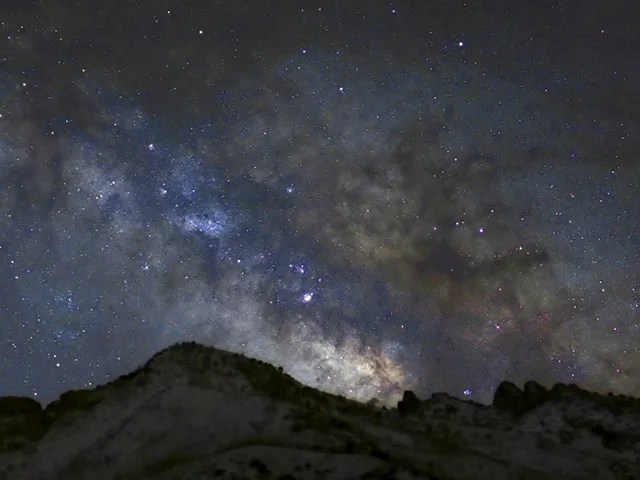
Skywatching tips, guides, and FAQs.
Read more
Keep Exploring
Discover More Topics From NASA





